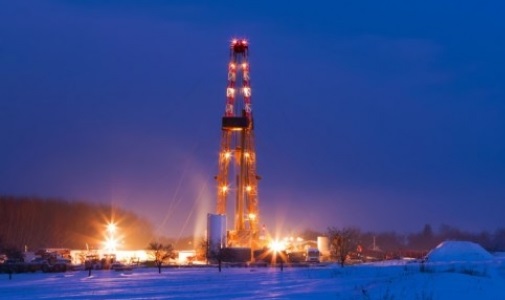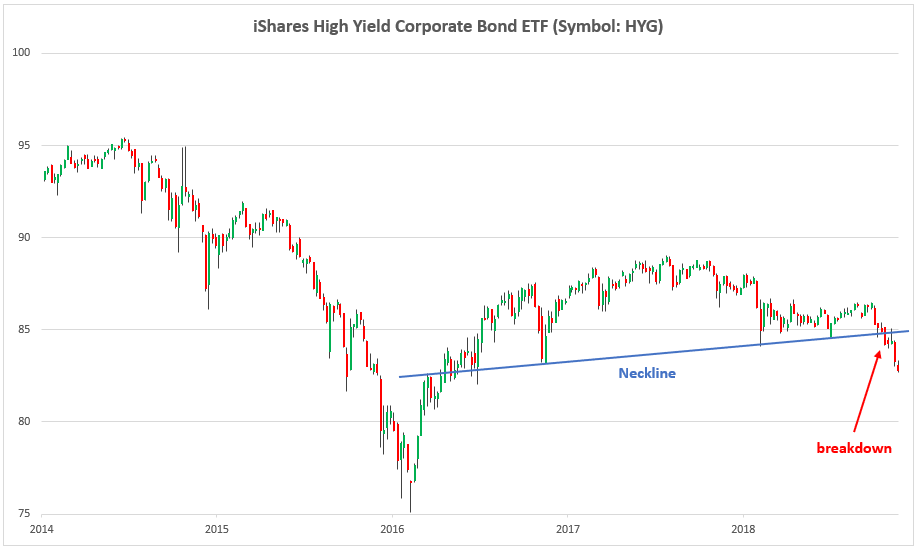OilPrice.org published a piece this week called “Warning Signs Flash For U.S. Shale” –

The shale tidal wave may finally be starting to ebb.
The largest oilfield services company in the world says that shale drilling activity is slowing, creating an uncertain outlook for 2019.
The recent volatility in oil prices has created “less visibility and more uncertainty” on spending by shale companies in 2019, Schlumberger’s CEO Paal Kibsgaard said on an earnings call on January 18. Shale drillers are “generally taking a more conservative approach to the start of the year, again delaying the broad based recovery in the E&P spend that we expected only three months ago,” he said.
Kibsgaard said that spending from the shale industry could be flat or down this year relative to 2018. That could translate into lower drilling activity, while E&Ps focus on drawing down the enormous backlog of drilled but uncompleted wells (DUCs). Companies working through DUCs could keep production aloft even as drilling slows, but output would likely fall relative to 2018, while decelerating further in 2020.
Schlumberger’s chief executive also warned that the shale industry could see other problems going forward that could be even more significant. Shale drilling suffers from a precipitous decline in output soon after a well is completed. After an initial burst in output, wells see a rapid decline in production. This is not news; it has characterized shale drilling for years.
I believe that the latest signs of the shale slowdown are the early signs of the shale bust that I warned about in November in a piece called “Why Oil’s Crash Will Cause A Shale Energy Bust.” In that piece, I wrote:
I am particularly worried about plunging oil prices because I believe that it is going to pop the shale energy bubble that I have been warning about for years.
Here’s what I wrote in Forbes in 2014:
I am also growing increasingly concerned that the U.S. shale energy boom is actually another post-2009 economic bubble (it would be a part of the commodities bubble). In a zero-percent interest rate environment like we are currently experiencing, any economic boom can devolve into a bubble. Shale energy extraction is a very capital-intensive business that relies heavily on cheap credit to survive. Shale oil wells experience much faster decline rates than conventional oil wells, which means that energy companies must keep drilling at a furious pace just to maintain their production – a very costly proposition that is typically funded by copious amounts of debt.
Here’s what I wrote in Forbes in September 2018, when I summarized the shale energy bubble:
U.S. shale energy boom/energy junk bonds: This boom/bubble is closely related to the corporate debt bubble discussed above. Extracting oil and gas from shale via fracking is extremely capital-intensive and would not be feasible in a normal interest rate environment. Thanks to the artificially low interest rate environment since the Great Recession, the shale energy industry’s net debt surged to $200 billion in 2015 – a 300% increase from 2005. Rising interest rates and the bursting of the corporate debt/junk bond bubble will cause a major bust in the shale energy industry.
The oil price plunge and overall rising interest rate environment is causing high yield or “junk” bonds to sink. The chart below shows that the HYG high yield corporate bond ETF recently broke below a key technical level known as a neckline, which is a signal that further bearish action is likely ahead (which means that junk bond yields will rise). I believe that this is yet another sign that the shale energy bubble is at risk of popping.

Fund manager Jeff Gundlach said that he expected that the Fed would raise rates “until something breaks.” There is a good chance that one of the first things that broke and continues to break is crude oil prices and the shale energy bubble. This has very serious implications because it is one of the most important drivers of economic activity and job creation in the U.S. since the Great Recession. Society is going to be taught the lesson that cheap credit and flooding the economy and financial system with liquidity leads to bubbles rather than sustainable economic booms.
I will continue watching and reporting as this situation unfolds…